Trafalgar tour of Scandinavia, Russia and Estonia July 2010
Wednesday 30 June To
Copenhagen
We checked in at the Marriot and met our Tour Director Goran,
and driver Wolfgang. There are 38 on the tour, mostly Aussies, plus some from The United States, Canada and New Zealand. It looks like we are
going to have a wonderful time!
Thursday 1 July Copenhagen
After a
lovely breakfast we did a city tour of Copenhagen. The first thing we
noticed was how it was build on islands with lots of joining canals. The
buildings aren't tall and many are colourful giving the city a lovely
ambience. There are lots of people around because it is the school
holidays.
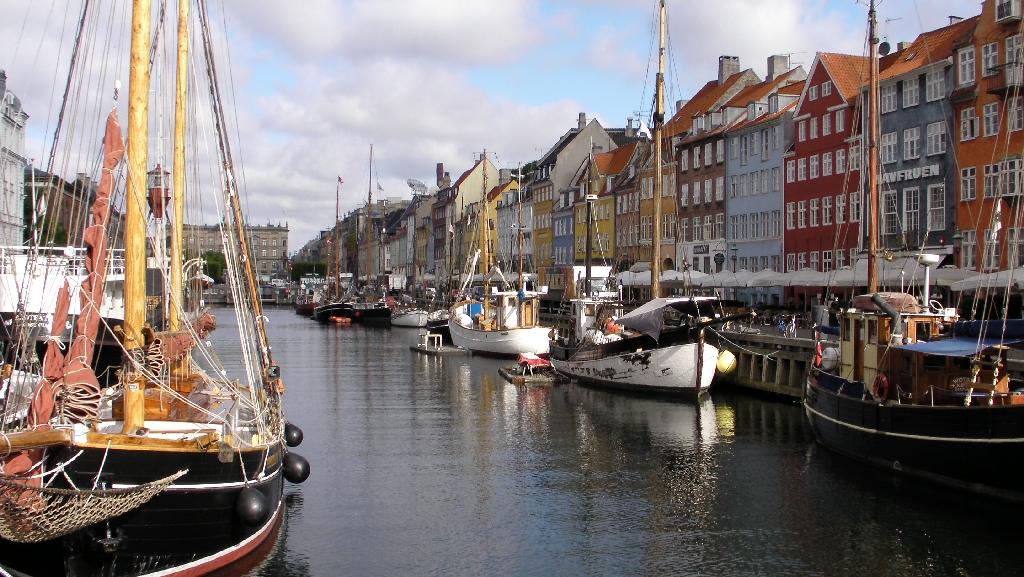
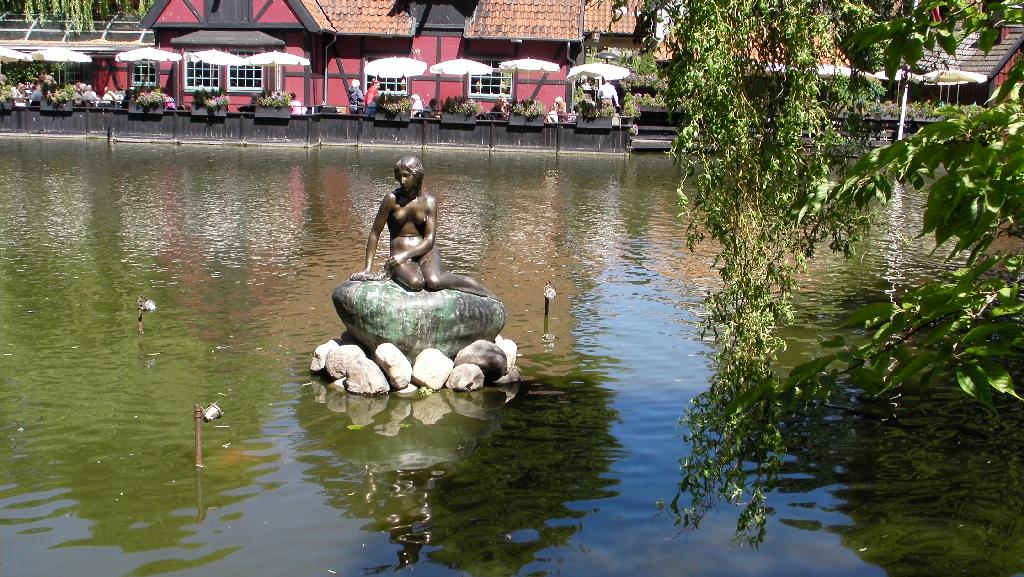
Hans Christian Andersen came from here and he features
prominently. One significant way is through the Little Mermaid - the symbol
of Denmark. (They normally have a brass statue of the mermaid on display but it is currently in Shanghai for the World Expo).
Many of the
buildings are lovely. We saw the Amalienborg Palace where the Royal family
lives; the Christiansborg Palace which is the site of the Danish
parliament, the beautiful Borsen, the Carlsberg Glyptotek and the National
museum. There are quite a few squares where the people congregate and some
of the shopping areas are blocked off from traffic so there is a nice feel
about the city centre.
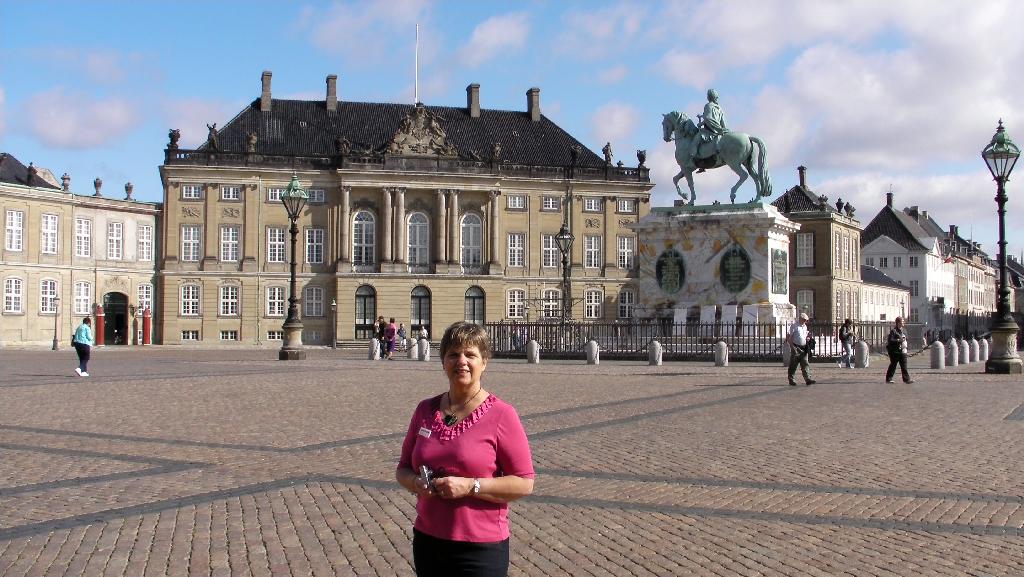
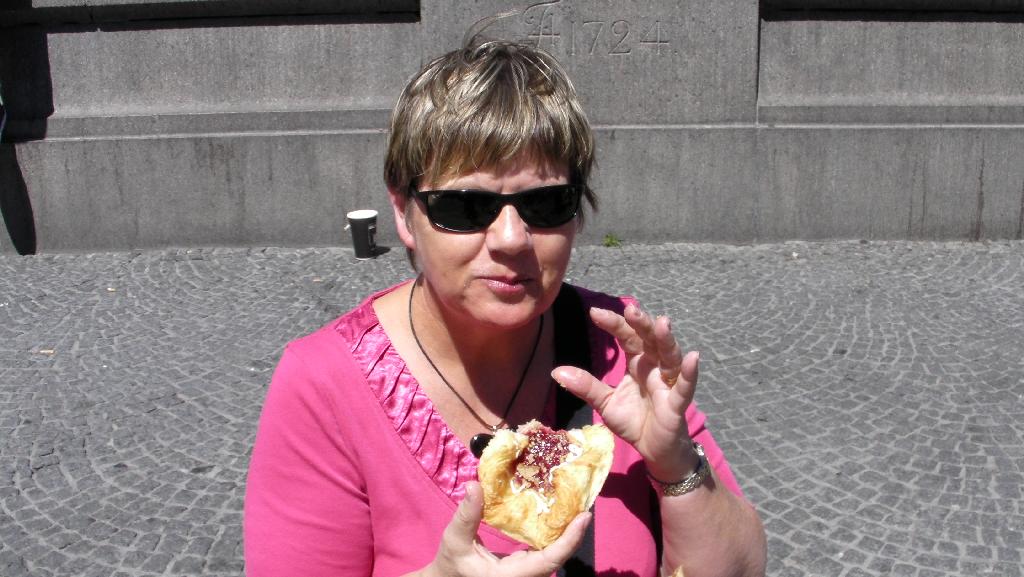
After the tour we walked back for a more detailed
exploration of the city centre and then visited Tivoli Gardens, which is a
theme park with lots of rides, gardens, shows and activities. It is pitched
more for children than adults so there wasn't much for us to do except watch all of the different activities. We wandered back to the hotel for
a rest, then headed back to town for dinner. Afterwards we went back to
Tivoli and watched one of their shows: a very professionally produced
pantomime.
Friday 2 June to Stockholm, Sweden
This was a full day in
which we left Denmark, had a short ferry ride over to Sweden and then drove
up to Stockholm. Along the way we stopped for lunch at a resort alongside
Lake Vattern and caught a glimpse of the Brahehus Castle. Otherwise it was
pretty much trees all the way with just an occasional town. About 60% of
Sweden is forested and there are thousands of lakes.
We arrived in
Stockholm and discovered it to be a very pretty city set on a lake. After
settling in to our hotel we had a walk around the city and headed for bed.
It's hot and there's no aircon as they reckon it's cold most of the
year.
Saturday 3 July Stockholm
We went on a city tour of Stockholm, -
what a beautiful city in the summer sun. We saw the City Hall with its Gold
and 'Blue' rooms where they give out the Nobel Prizes, and where they had
the reception for the royal wedding of Princess Victoria and her personal
trainer Daniel a couple of weeks ago; parliament; the Old Town, the Royal
Palace, and a panoramic view over the city.
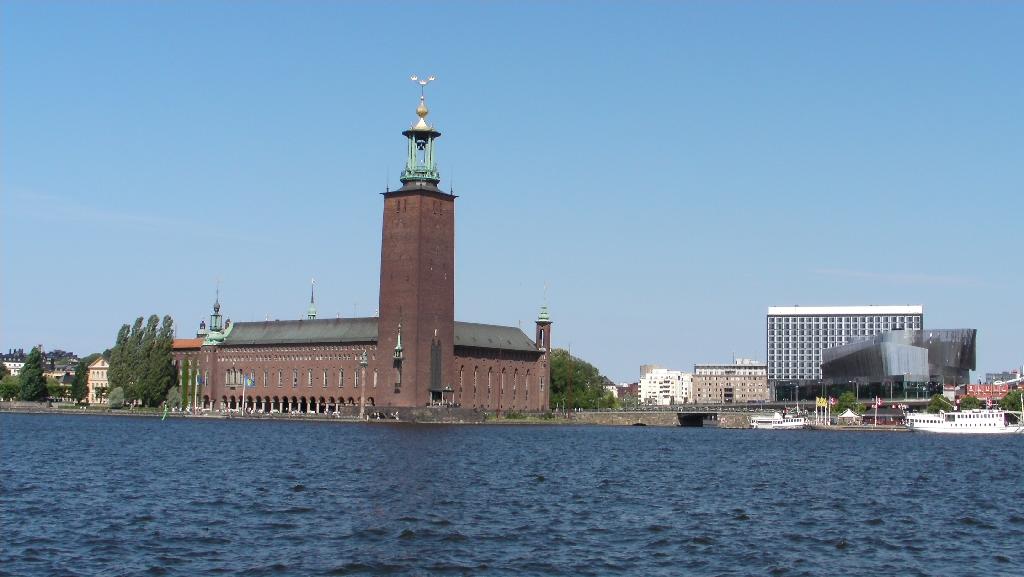
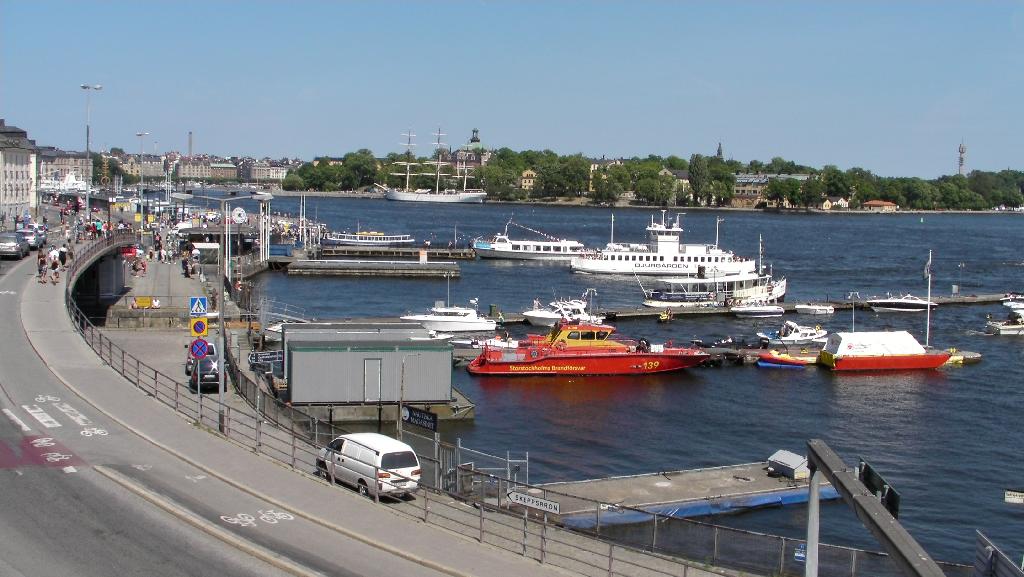
Stockholm is situated on a
large lake linked by a loch to the sea.
In the afternoon we wandered
around the central city (for 6 hours!) and were lucky enough to see the
changing of the guard at the palace. The city was buzzing in the summer sun
with people everywhere. Stockholm is much more upmarket and busy than
Copenhagen but equally delightful.
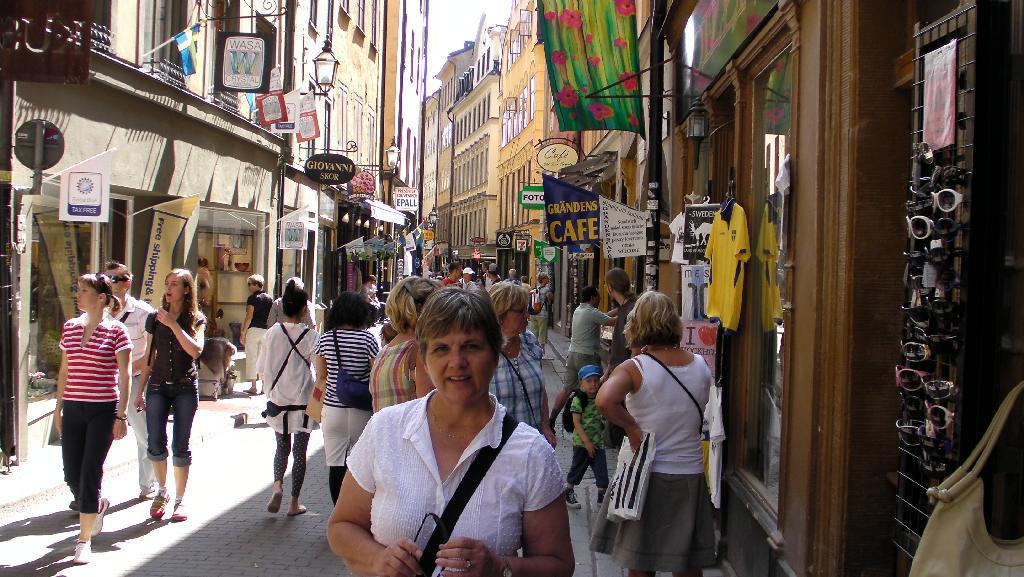

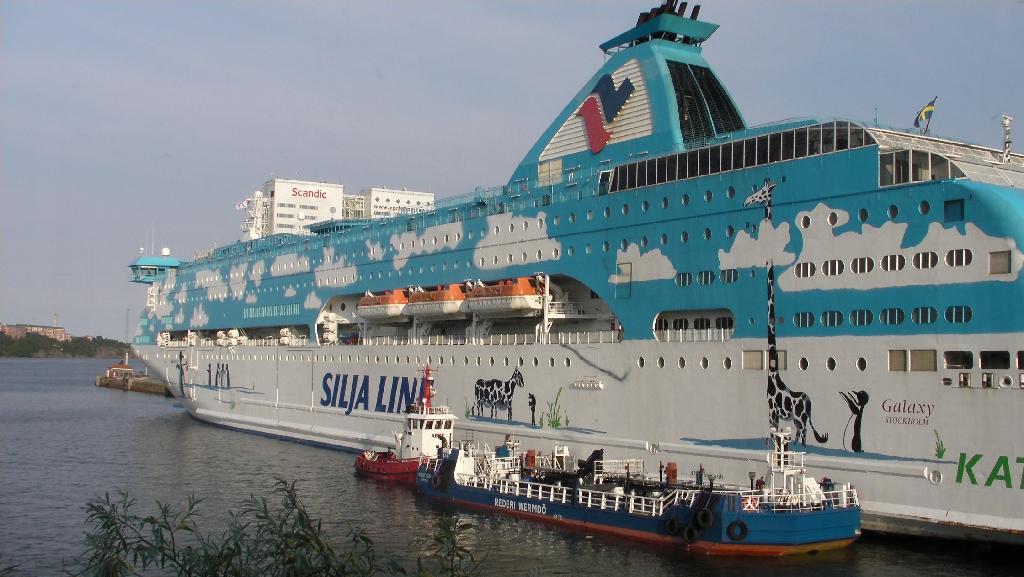
In the evening we caught an overnight
ferry across the Baltic Sea to Finland.
Sunday 11 July Helsinki,
Finland
In 1154 King Eric of Sweden was given permission by the Pope to christianise Finland and they did so by killing many of them off. Even today the Fins hate the Swedish. Finland was ruled by Sweden for 650 years till it was taken over by Russia in 1809. Finland became independent in 1917 at the time of the Russian Revolution and tried to be neutral in WW2 but lost one third of its area to Russia.
Finland is
now part of the EEC so we are using euros for the first time. When we
arrived in Helsinki, the capital of Finland, we went on a city tour. We saw
the port, downtown, a 'rock' Lutheran church, the Sibelius park and
memorial, the stadium for the 1952 Olympics. (Paavo Nurmi won 9 gold medals
and was called the flying Finn). We then went along Mannaheim St to see the
main shopping centre, with its trams and markets.
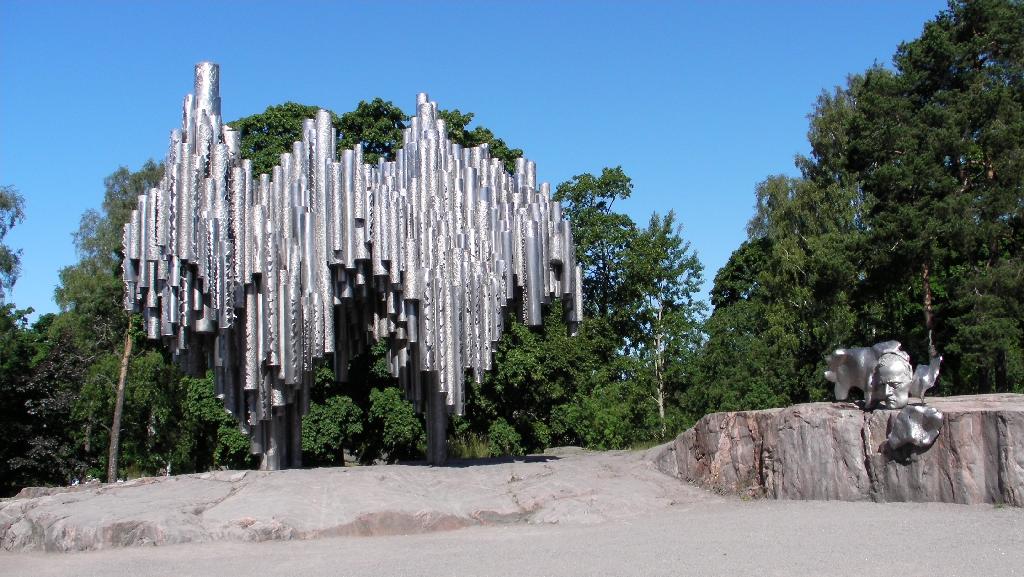
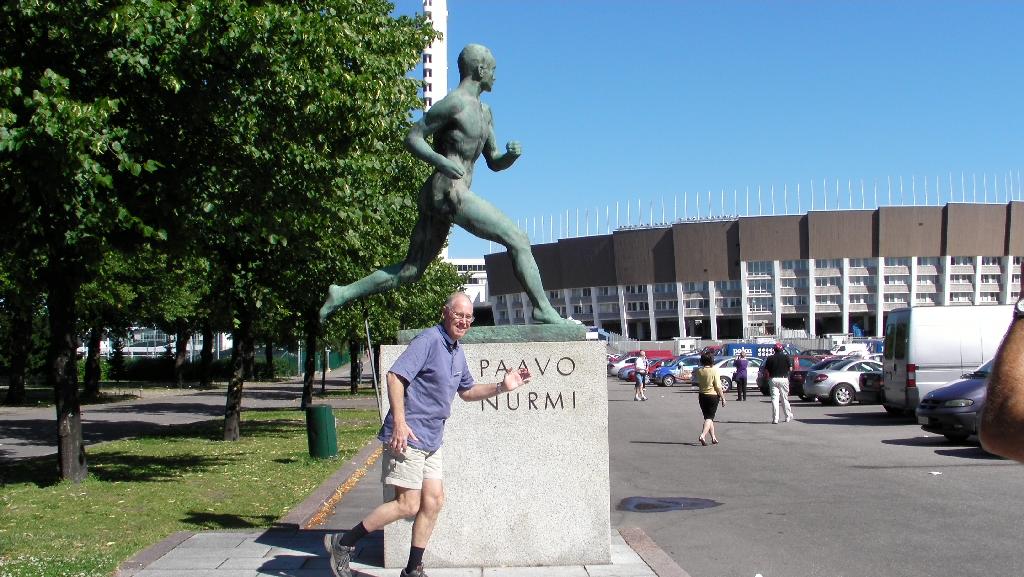
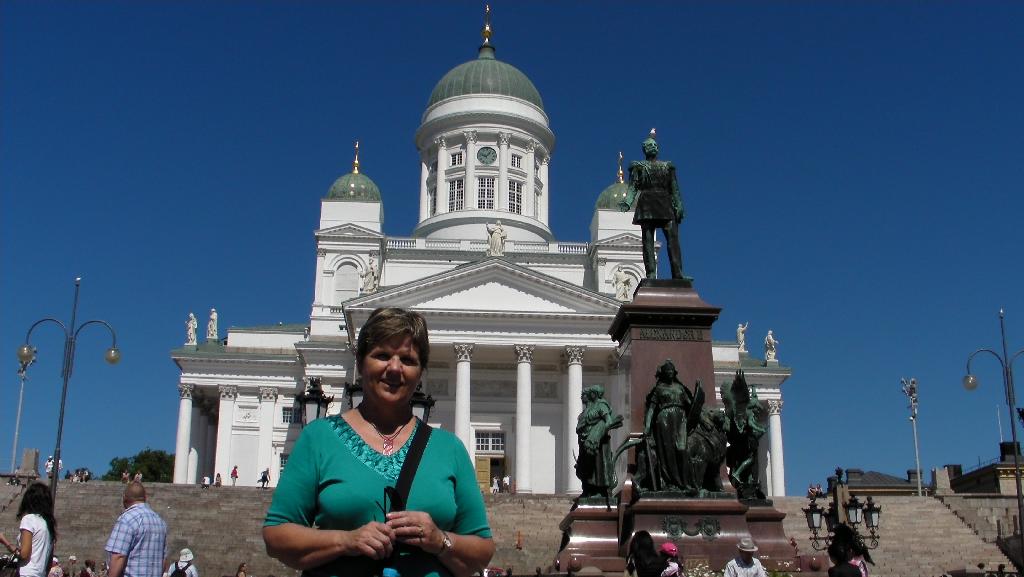
We then saw the old city,
and the Senate Square. This area reflects strongly its Russian heritage and
is dominated by the white Lutheran Cathedral. Czar Alexander has a monument
here.
In Market Square we had some local fare: paella and reindeer meatballs. We even met Father Christmas! There were thousands at the market enjoying the summer sun. Rather ironic were the two icebreaker ships which were waiting in the harbour for the day it freezes over. (The harbour is frozen over for 3 months of the year). Later we went for a walk around the city centre before getting some supplies from a supermarket in anticipation of our trip to Russia.
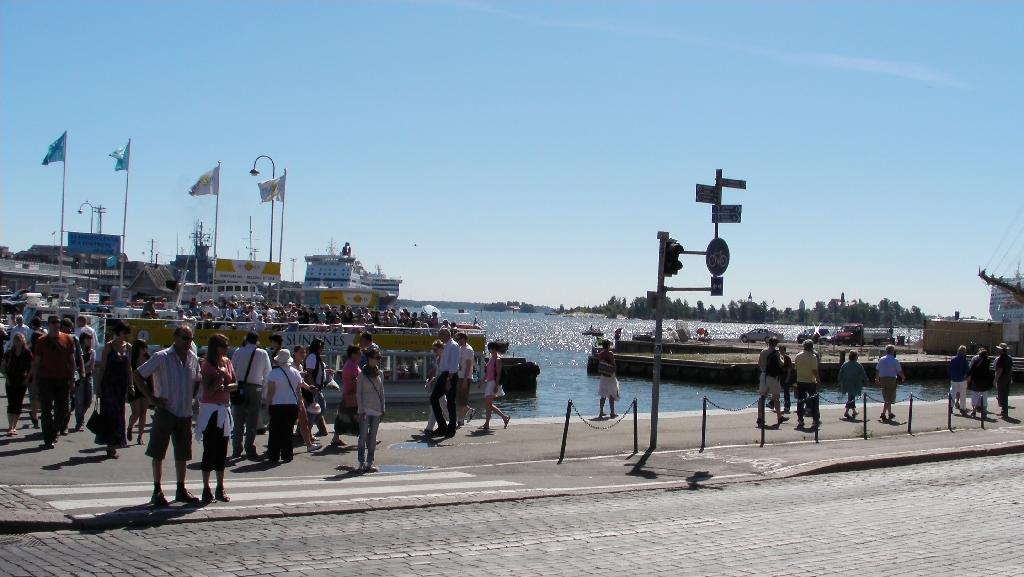
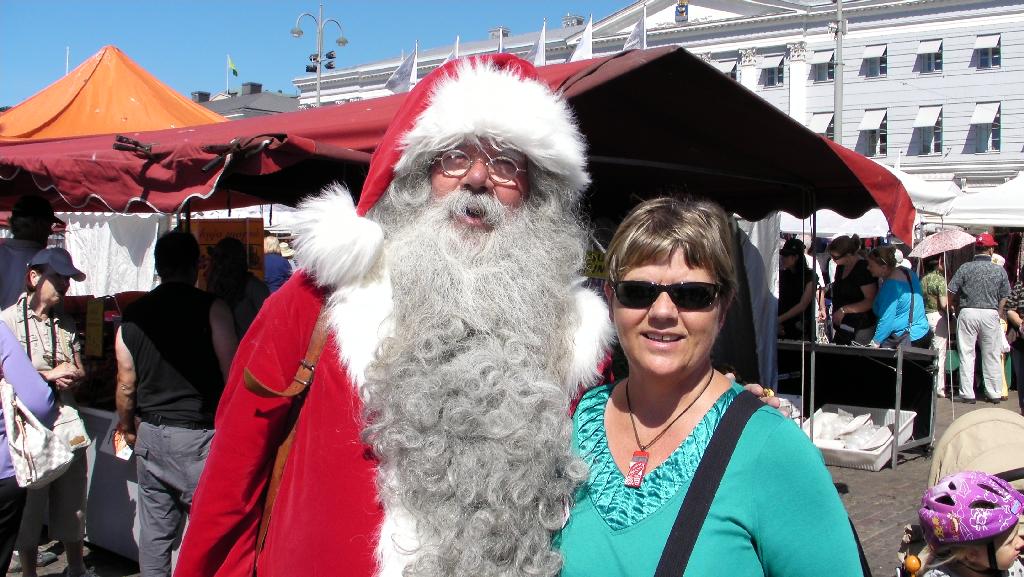
Monday 5 July St Petersburg
We
passed through an imposing checkpoint and then on to the historic city of
St Petersburg - population 5 million, the northern capital of Russia.
Peter the Great established the city in 1703. He built a fortress
on the River Neva and ordered the nobility to populate the area so it grew rapidly. St Petersburg only gets 60 days of sunshine per year (and that's what we experienced - perfect weather. In winter it goes down to -32 and it is frozen for many months). The city is on the 60th parallel so it only gets 1/2 hour of night in summer.
At the beginning of
our city tour we saw the Aurora, a ship that shot a blank shot in 1917 that
started the Russian Revolution leading to 70 years of communism. The Aurora
became a symbol for the Russian navy.
Originally St Petersburg was called
Petrograd then in 1924 Leningrad. After the fall of communism it was
renamed St Petersburg. Over 1 million died here in the siege during
WW2.
We saw the Peter and Paul Fortress which Peter the great built when the city began. It was built initially to keep the Swedes out. The emperor had unlimited power so it soon became a prison. After the revolution it continued as a prison but it is now a museum and thousands visit every day. The fortress contains the cathedral of St Peter and St Paul. It is more westernized than most because Peter didn't like Moscow so wanted Petrograd to be more westernized. Peter is
buried in the cathedral as are the Czar Nicholas and Alexander. In the
revolution they were sent to Siberia and killed. Their bodies were exhumed
in 1998 and returned to be buried at the Cathedral.

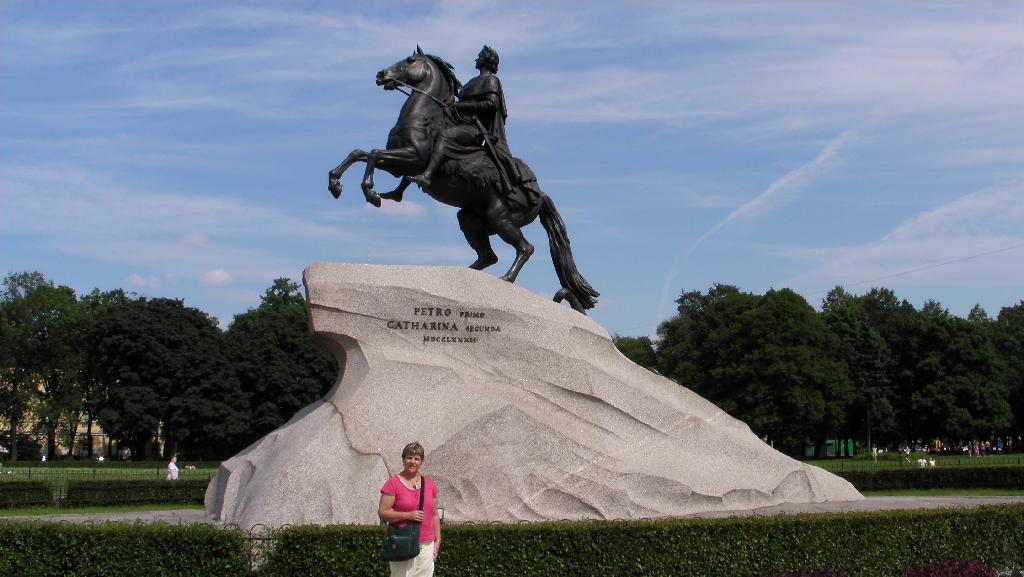
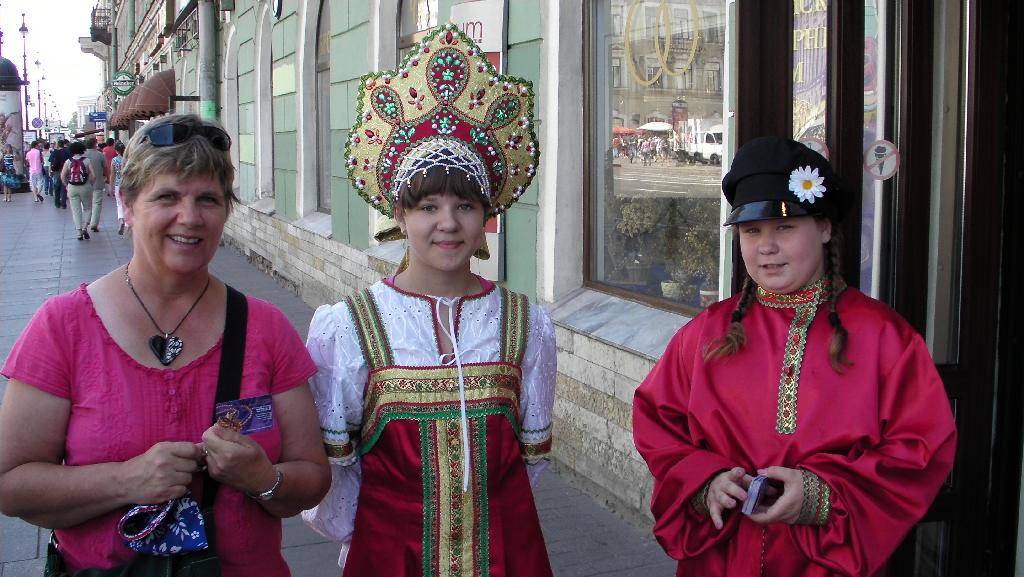
In the central city we saw many palaces
for royalty and aristocrats which were all confiscated in the revolution
and became schools, museums and libraries. Fortunately all of these
wonderful buildings were not destroyed in the revolution and most survived
the wars. The city centre is really buzzing with crowds of people enjoying
the
summer sun in the midst of the amazing old buildings. The city is built
on canals and islands with arches, squares, palaces and memorials everywhere. Notable was the memorial for the siege of Leningrad in Palace Square. (the city was cut off for 900 days during WW2 with no food or water. Over 1 million died.
By the River Neva we saw the
Hermitage winter palace where the emperors lived. Peter decreed that all
buildings in the city should not be taller than his palace so there are no
high rises. Nearby is the memorial to Peter the great, and St Isaacs
cathedral - the biggest church in the city, and the 5th biggest in the
world. Over the river we saw impressive monuments to Pushkin, Saccharov,
Pavlov, the St Petersburg University and the Admiralty.
After dinner
went on a cruise to see the city from the Neva river. It was strange to see
people sunbathing at 9.30 at night!
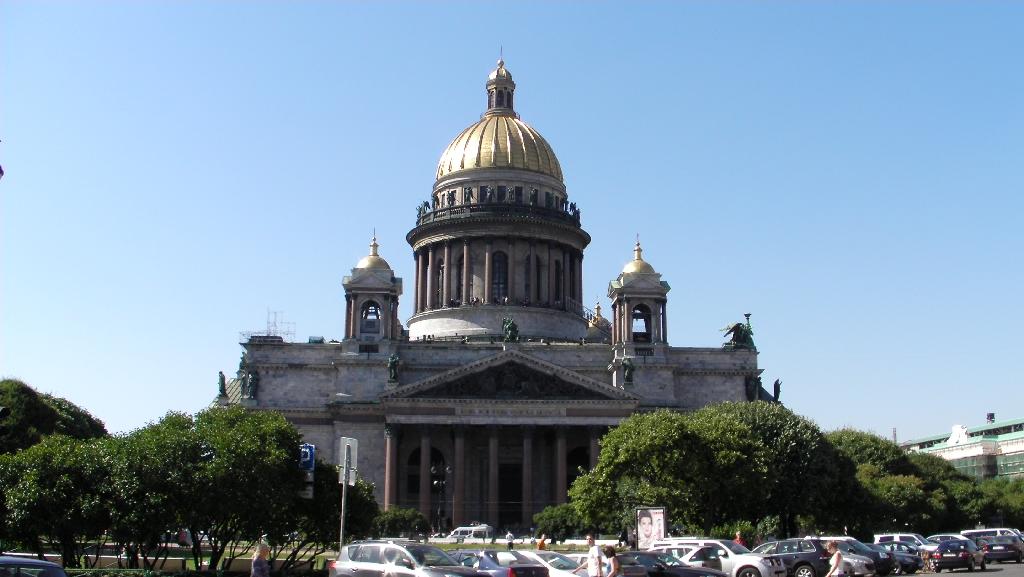

Tuesday 6th July St Petersburg.
We
walked around the city centre and saw the main sights up close, rather than
viewed from the bus. It was hot but there are plenty of parks so we were
able to keep in the shade most of the time.
Afterwards we caught a local
bus back to the hotel. We were told off in a restaurant for not going back
to our seat, and on the bus for sitting in the conductor's seat. We were
warned about this kind of thing and told to accept it "because that's the
way they do things in Russia".
Wednesday 7 July St Petersburg
In
the morning we visited L'Hermitage, the winter palace of Peter the Great
and his dynasty. It is the second biggest art museum in the world (after La
Louvre in Paris). This is the building that Peter the Great said should be
the tallest in the city. It is truly magnificent. The art works in the
museum are simply amazing: Monet, Renoir, Van Goph, Rembrant, Cezanne, Da
Vinci ...., we soon went into 'masterpiece overload'. There was beauty amd
creativity everywhere, all set in magnificent opulence. When Catherine was
empress she wouldn't let anyone else in to view all the art - just herself!
The works were purchased by the aristocrats at the expense of the peasants.
When the revolution occurred many works from throughout the country were
moved here. Then in the war some works stolen from the Germans were housed here, and will only be returned if the Germans return the ones they
stole from Russia!
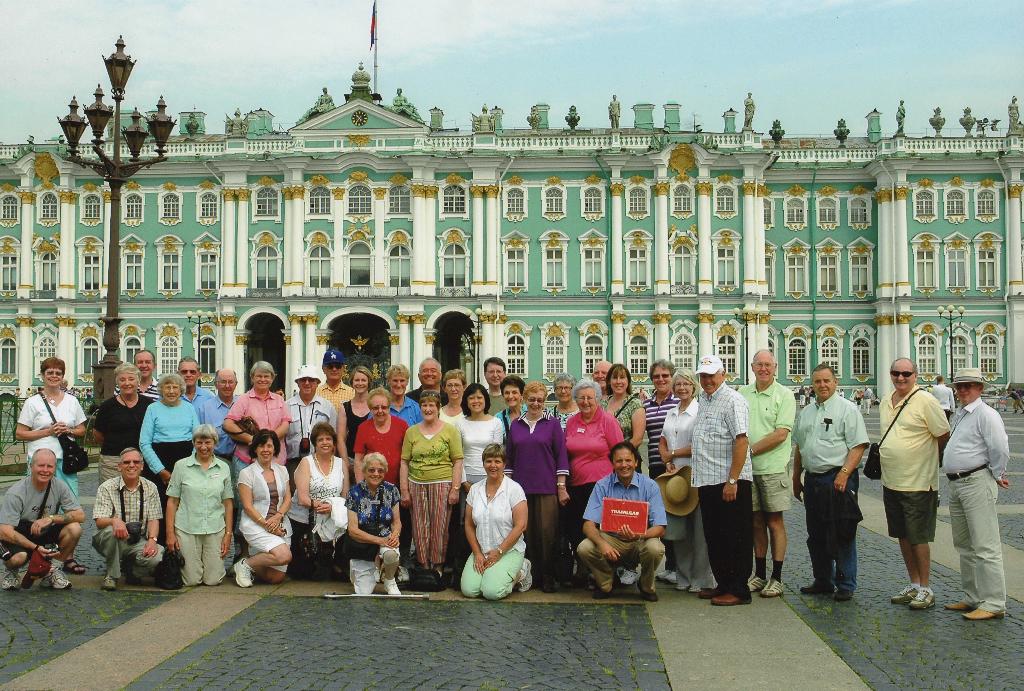
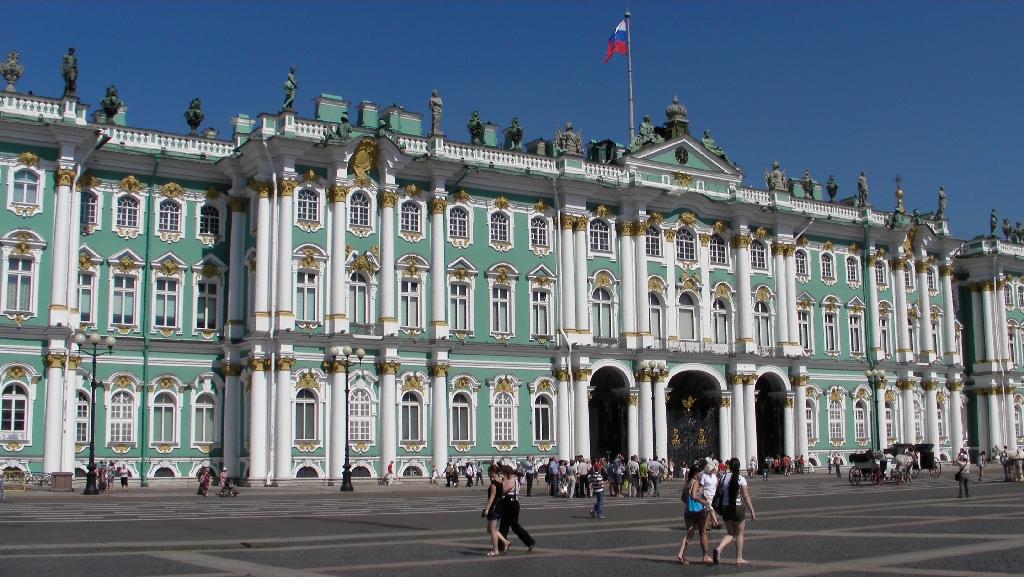

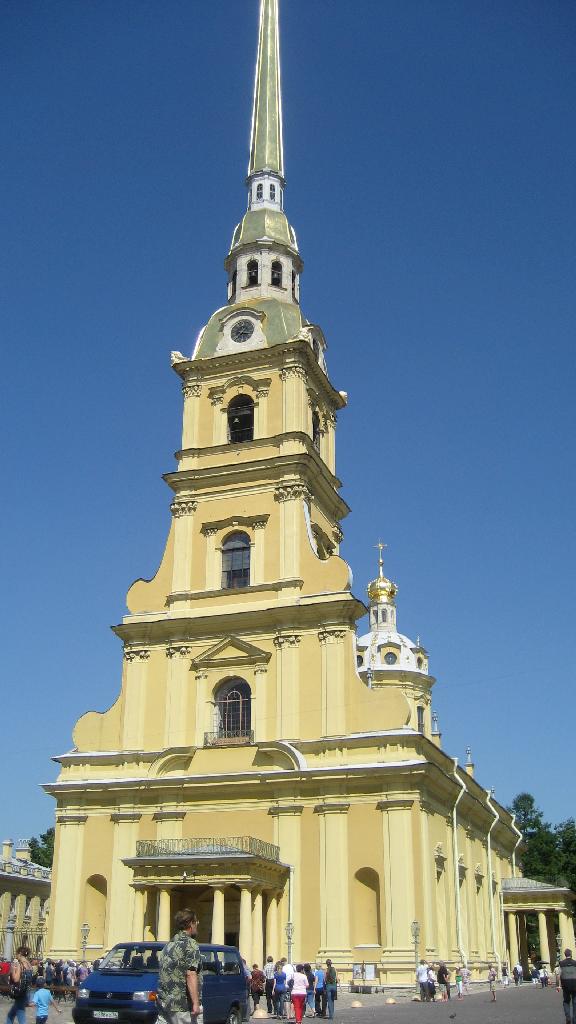
After visiting the Hermitage we went back to the Fortress and looked around the Cathedral of St Peter and Paul. This was built by Peter the Great when he established St Petersburg but he died before it was finished. Peter is buried in the cathedral along with other members of his family. Most notable are the last Czar Nicholas and his wife Alexandra. In the revolution they and were deposed and with their children were sent to Siberia and killed. All of their property was confiscated. This was the end of the Romanov family dynasty and the start of 70 years of communism. In 1998 they were exhumed and their bodies brought back to the cathedral and buried there. Afterwards we heard a magnificent male quartet singing some of the old church music. Everyone stands in Russian Orthodox churches, and they normally don't use musical instruments, just voices.

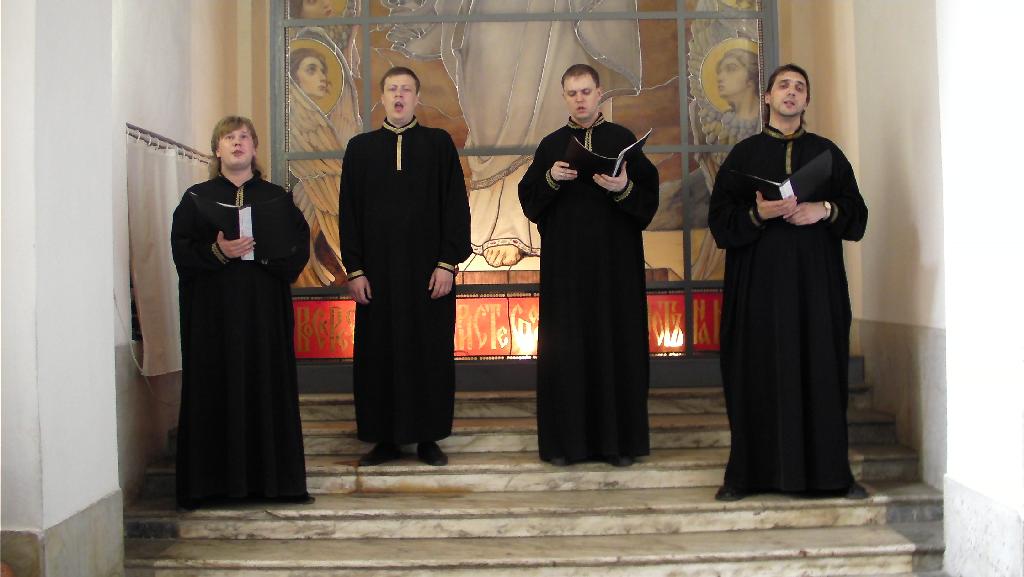
Next we visited the palace of Count Felix
Yusupov. He was one of the richest people in Russia just before the
revolution. He is famous for murdering Rasputin and we saw where the miser
happened. The background to this was that Czar Nicholas and Alexandra had
four girls before finally producing a male heir Alexis. Unfortunately he
had haemophilia and Rasputin was hired to cure him of this disease.
Rasputin gained great power and was rumoured to be having an affair with
the Queen. This was threatening to the nobility so Felix Yusupov poisoned
him with arsenic laced pastries, and shot him. He didn't die so they took him to a nearby river and drowned him.
In the evening we had dinner
in a typical Russian restaurant and had caviar, borsch soup, stroganoff
and cake. We then went to a Russian folklore evening and experienced
cossack dances, songs, instruments and costumes fom around the country.
Magnificent!
Thursday 8 July St Petersburg to Tallinn, Estonia
On our
way out of St Petersburg we saw the memorial for the siege of St Petersburg
and then went to Pushkin to see the Palace of Catherine the Great. It was
the summer palace of the Romanov family. It contains the famous 'amber
room' which was once called the 8th wonder of the world.
Catherine the Great was a
German princess who married Peter the 3rd, the grandson of Peter the Great.
She organised a coup and had her husband killed after months of marriage
and ruled for 34 years. Her
Palace is magnificent!


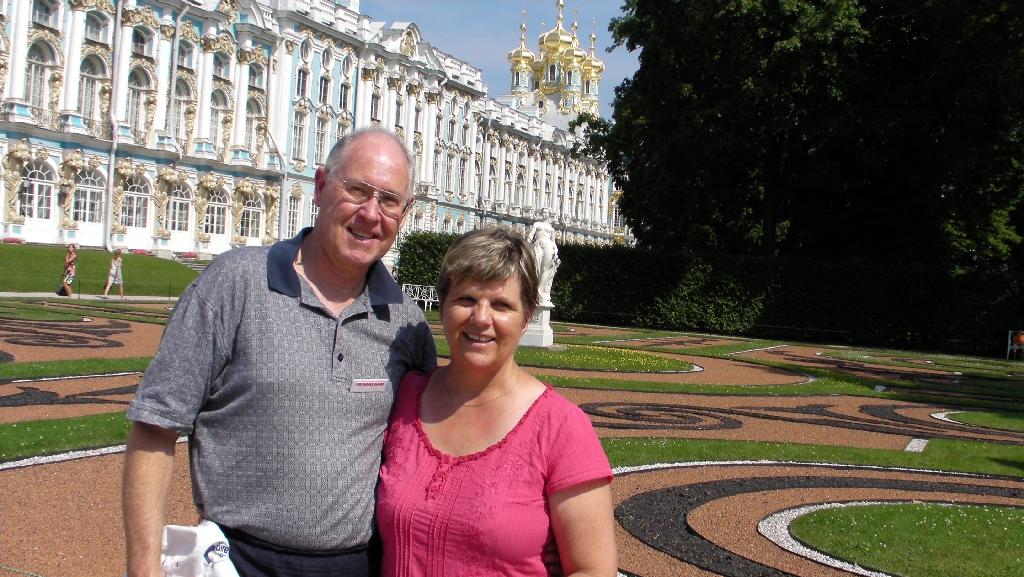
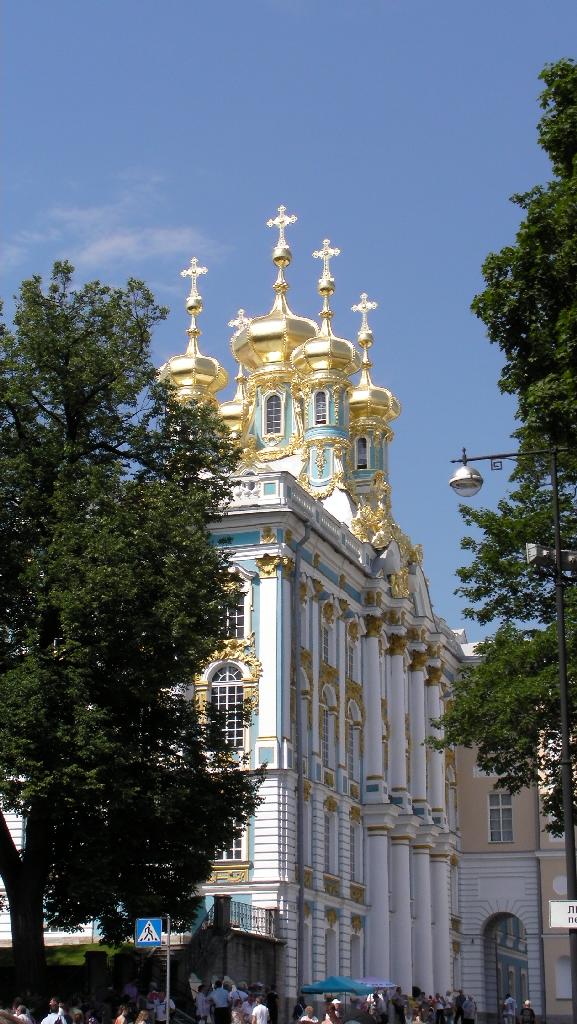
We really enjoyed
our time in St Petersburg. Russia was nothing like what we imagined. It is
modern, free and westernised. There was no evidence of oppression.
Communism or governmental control. The people seem happy, busy and are
actively buildings lives for themselves. We saw the incredible opulence of
the Czarist regime and that made sense of the revolution. The poor were so
poor and the rich so rich that it was inevitable there would be a revolt.
When the communist government took over they confiscated the homes and
resources of the rich and
gave it to the poor. Unfortunately the excesses
of the communist regime and poor economic management led to the fall of
communism. Gorbachev introduced perestroika (reshuffling) and glasnost and
this led to the breakdown of the Soviet Union and then in 1992 to the
birth of a free and much more democratic Russia.
The closer we got to
the Estonian border the worse the road got, showing lack of support for
infrastructure outside the main centre. We also got stopped for speeding
and it was quicker and easier for all to bribe the police with 300 rubles
and we were on our way. There is still a lot of corruption in
Russia!
Still it was a pleasure and privilege to visit Russia. If you have
the opportunity to visit St Petersburg take it!
Estonia is one of
the countries that was part of the previous Soviet Union that separated off
in 1992 so relations with Russia are not too good. The border is difficult
to get across as a result. It took about 3 hours to get through because a
visa was 1 day out. There was also a bribe of 30 euros so we didn't have to
have all of our luggage
checked. Everyone was pretty fractious by the time
we got through to Estonia and then we had a 200km drive to get to our hotel
in Tallinn.
Friday 9 July Tallinn to sea
Estonia is a small country of
1.4 million people. It has had a troubled history as it is next to the
large countries of Russia and Finland and close to Germany. It is one of
the states that broke away from the old Soviet Union and it is now part of
the EEC. We had a tour of Tallinn and saw the music stadium where they have
big outdoor concerts and the site of the yachting for the Moscow Olympics. We then went on a walking tour through the Old Town.
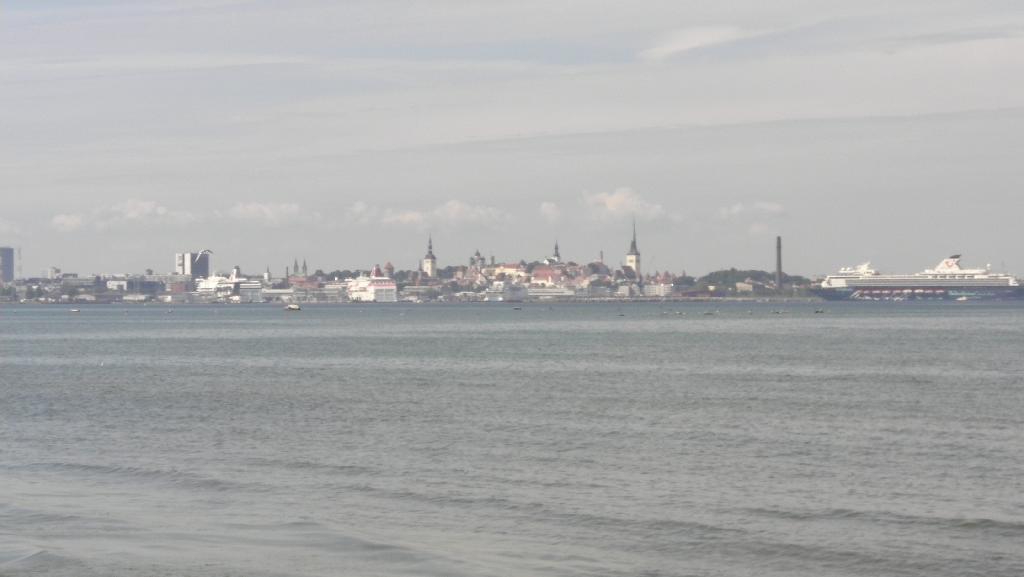

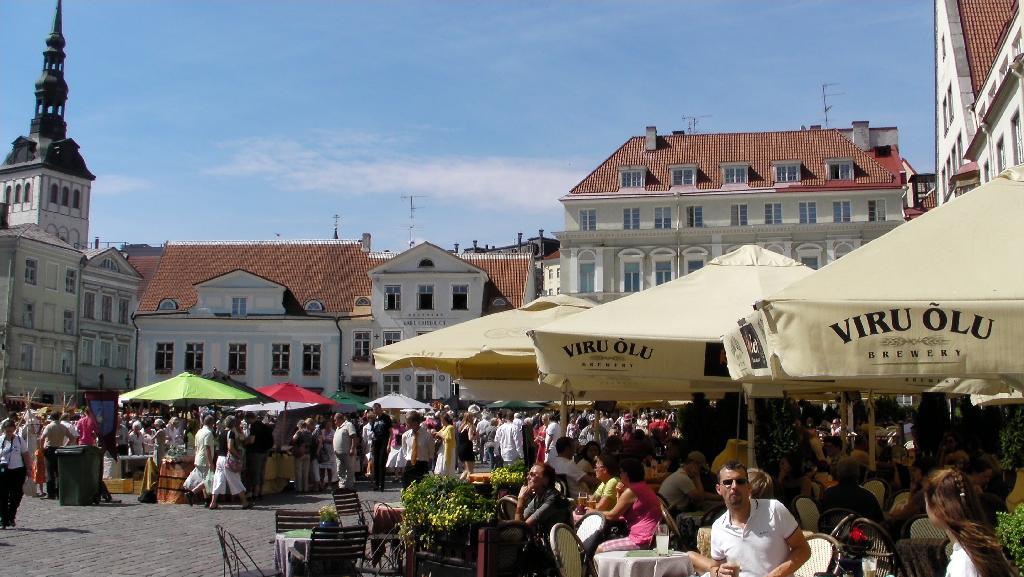

Tallinn is a delightful place with a wall, turrets, markets, narrow cobbled streets,
and many interesting shops and eateries. It is a Hanseatic Town dating back
over 600 years. (Hanseatic towns were a group of towns in various countries
which cooperated with each other for trading purposes - much like the EEC
today is a cooperative group of countries). Tallinn has a lovely feel to
it. It has many lovely churches (but very few attend them). It is obviously
working hard to overcome its difficult past and build a safe and prosperous
society.
Late in the afternoon we boarded the luxurious Tallink ferry
Victoria 1 for our overnight trip over the Baltic Sea back to
Stockholm.
Saturday 10 July Stockholm to Hamar, Norway
We arrived back
in Stockholm after a pleasant voyage and headed through Sweden's
agricultural landscape to the Norwegian border. Along the way we saw
countless lakes. The border was interesting because it was the first one ever
to be demilitarised (in 1914) so there is free travel between the two countries. Just inside the Swedish side there is a big shopping complex
because lots of Norwegians cross over to Sweden to do their shopping. (the
prices in Norway are extremely high).
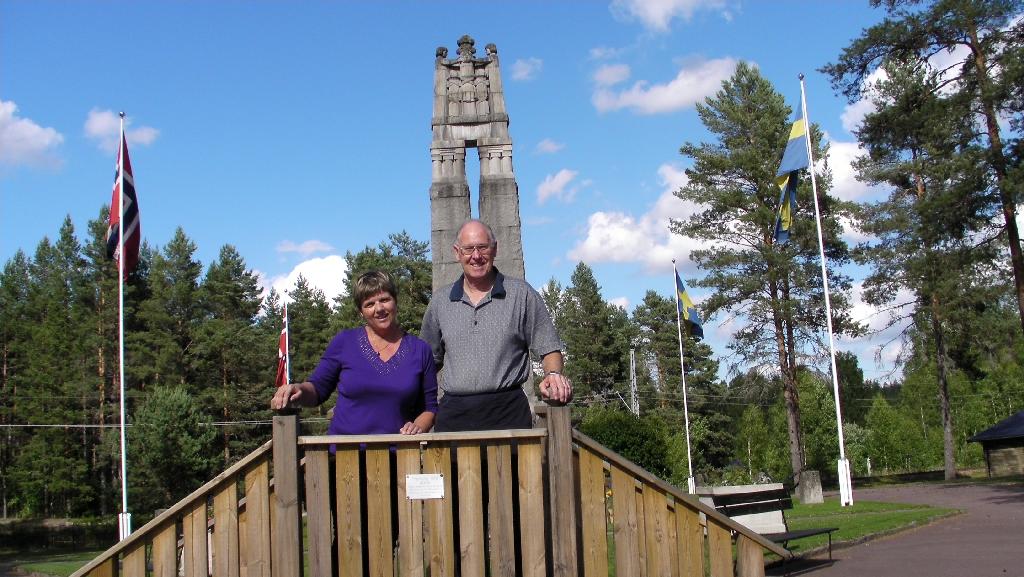
Norway is extremely picturesque with
lovely lakes, farms and towns. It is famous for the beauty of it's fjords
and we will start to see them tomorrow. We settled in to our hotel in the
tiny village of Hamar and
had a wonderful dinner. The glories of Norway
await us!
Sunday 11 July to Geiranger
Norway is the home of the
Vikings who were great explorers and marauders. E.g. Eric the Red who
discovered Greenland. It was ruled by Denmark for 450 years, was given to
Sweden, and became an independent country in 1905. It was neutral in WW1
and tried to be in WW2 but were occupied by Germany. It joined NATO in 1949
and has become prosperous through oil discoveries. Harald 5th is the
current King.
We saw Lillehammer, the site of the 1994 Winter Olympics and
saw some downhill ski jumpers in action. In the village of Lom we had a
tour of a Stave church, dating back 850 years. Originally it was Catholic
but was then taken over by the Lutherans. The ladies and men sat on
opposite sides of the church as in the old days. The church was built in a
way that it was held together without nails.
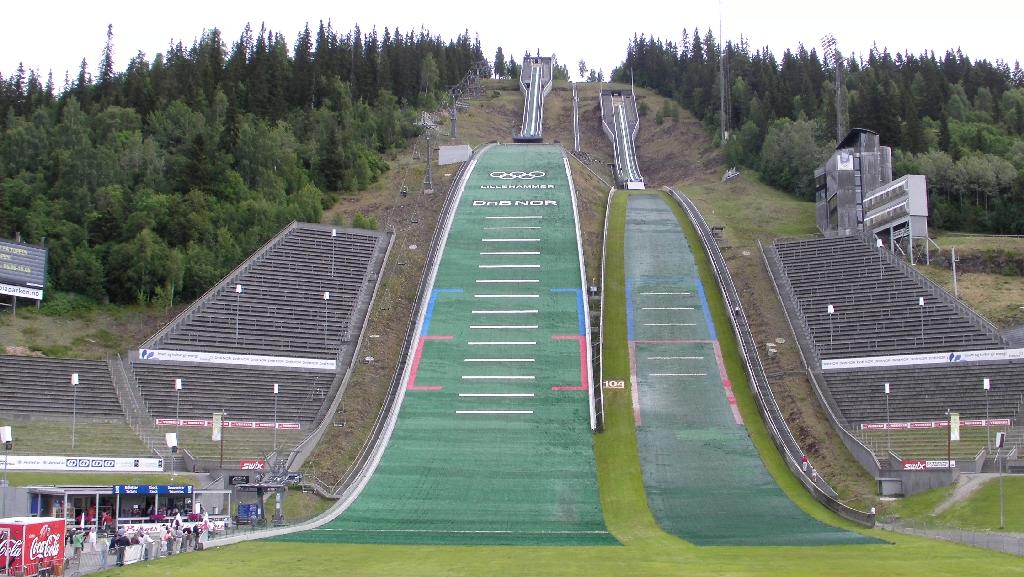

On the way through to Geiranger we passed over a mountain range and saw some beautiful scenery. There is evidence of glaciation everywhere: the U shaped valleys, crushed rocks, towering mountainsides, and bluish glacial milk in the rivers. Norway was completely covered in ice 10,000 years ago and is gradually rising up out of the sea as a result of the weight of the ice being released.
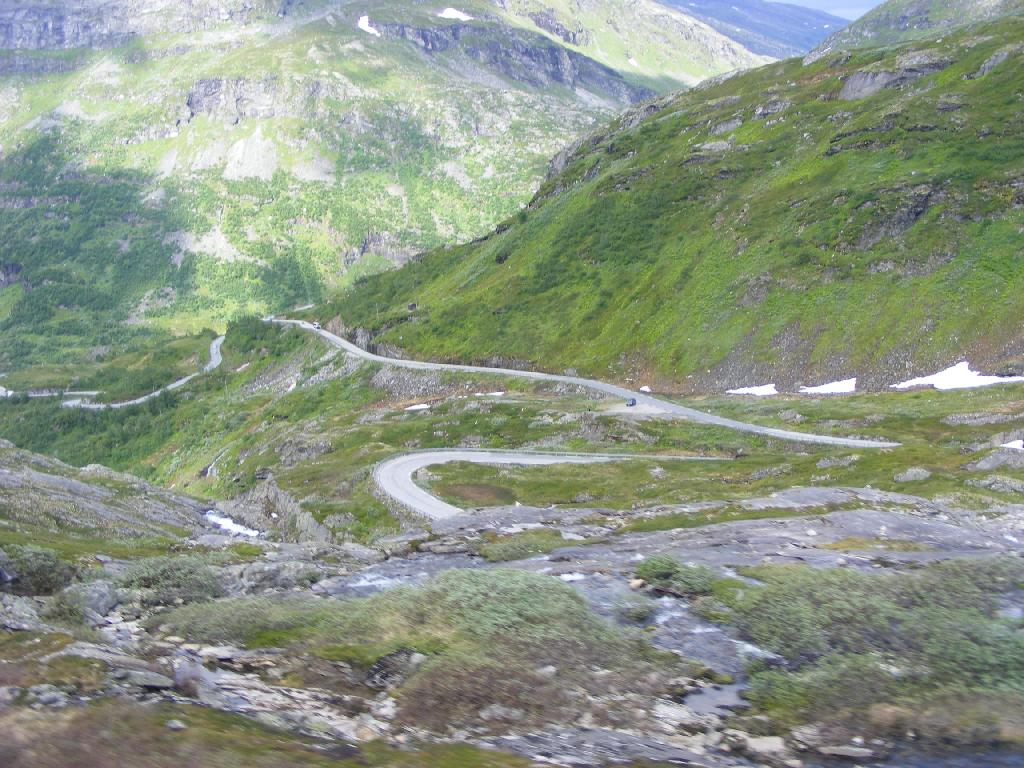
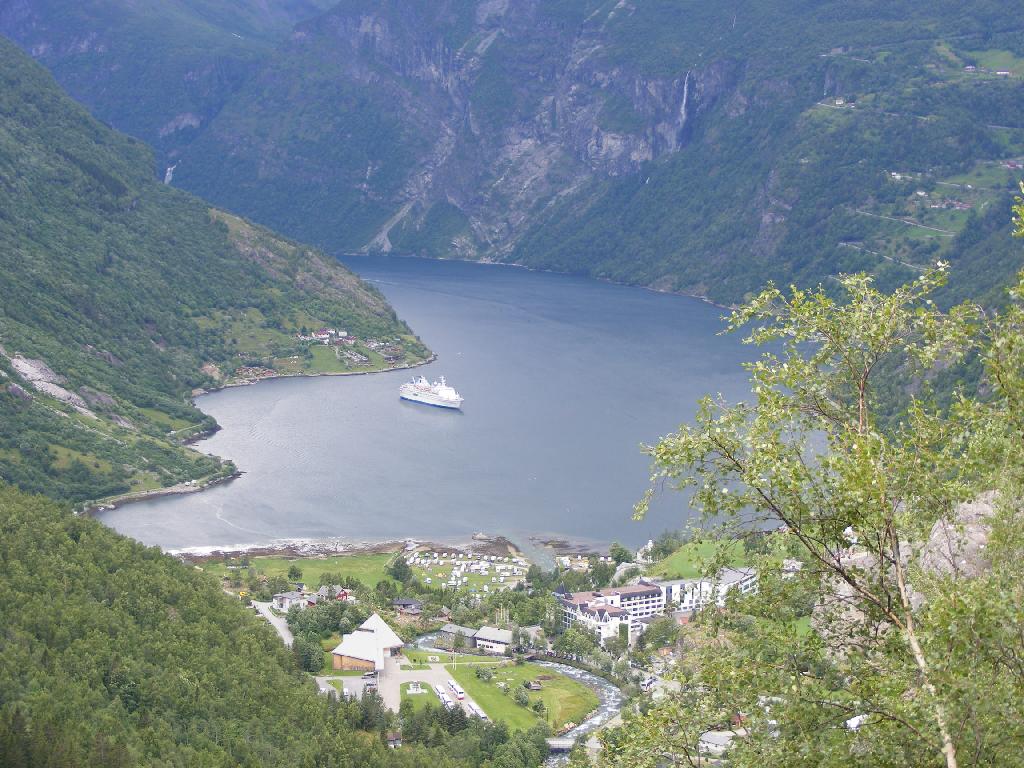
We drove into the incredibly picturesque village of Geiranger over 20km of the most amazing piece of road. It descended through an old glacier with lots of tight turns with ice, cliffs, rock faces and spectacular views all the way down to the village at the end of the Geiranger Fjord. The fjord is 16km long and is part of a larger fjord
that is 100km long.
After dinner we watched the World Cup final and Spain
beat the Netherlands 1-0.
Monday 12 July Geiranger
We explored
the tiny village of Geiranger. It is a mecca for cruise ships and three
arrived in the morning, disgorged their passengers for a few hours then
departed late in the afternoon. We went for a walk around the edge of the
fjord and got some very scenic views of Geiranger and its cruise ships.
This area is a UNESCO World Heritage site and is one of Norway's major
tourist attractions. You can certainly see why! It is idyllic with ships,
hills, waterfalls, ice, cabins, village and the harbour set in an enormous amphitheater of towering mountains. Truly magnificent. In the afternoon
we explored the village with its quaint shops. The crowds suddenly
disappear when the cruise ships depart.
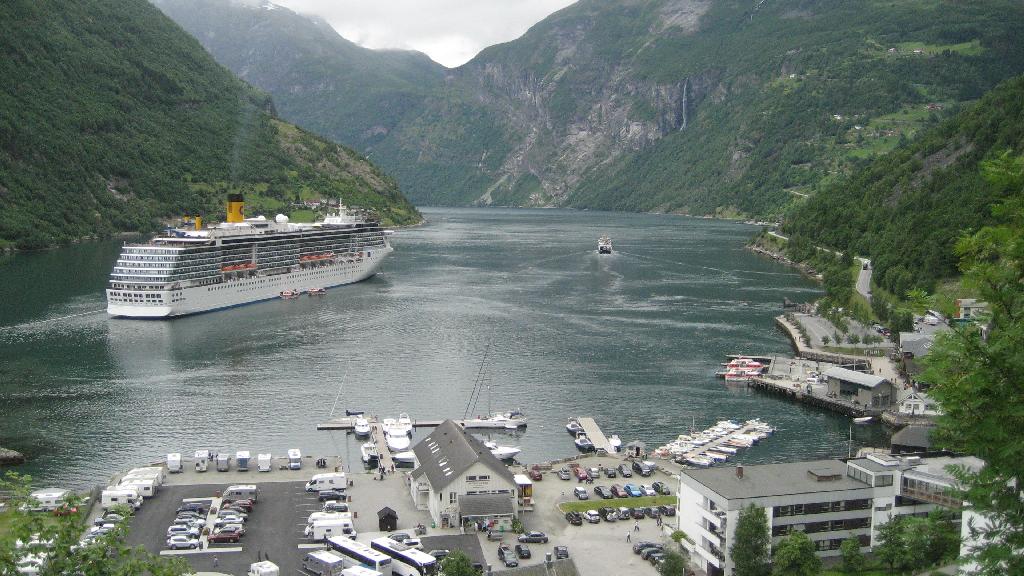

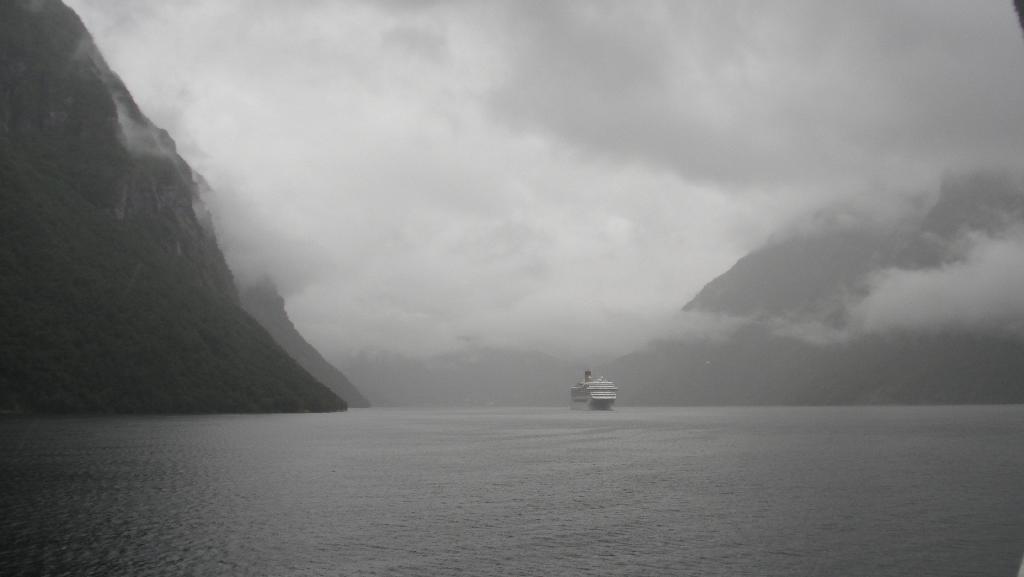
The scenery all the way was just magnificent!


We settled into a quaint hotel in Leikanger, overlooking the Sognefjord. This fjord is about 200km long and averages about 1km deep. Late in the afternoon we visited a typical Norwegian farm. It is quite different to the farms we are used to. There are about 6 farmlets that work together cooperatively with all of their houses and barns together in a little community. They grow apples, pears, and berries and sell some fruit to the market, some on the side of the road and make cider from the rest. They also have some animals, mainly sheep but also goats and cows. The animals are marked and the taken up into the hills to graze on public land. The best ones are tracked by radio! Grass is grown and cut for hay. In the winter the animals are brought down from the hills, kept in large barns and fed with the hay. There is very little loss of the animals as they are left up in the hills as each farmer only uses about half a hectare for grazing. The farms are so small they can't be profitable and the government subsidizes farmers by about 50%. (Norway can afford to do this because it is very rich in oil and in minerals. It hasn't wanted to join the EEC as it doing so well it can't see any benefits in joining).
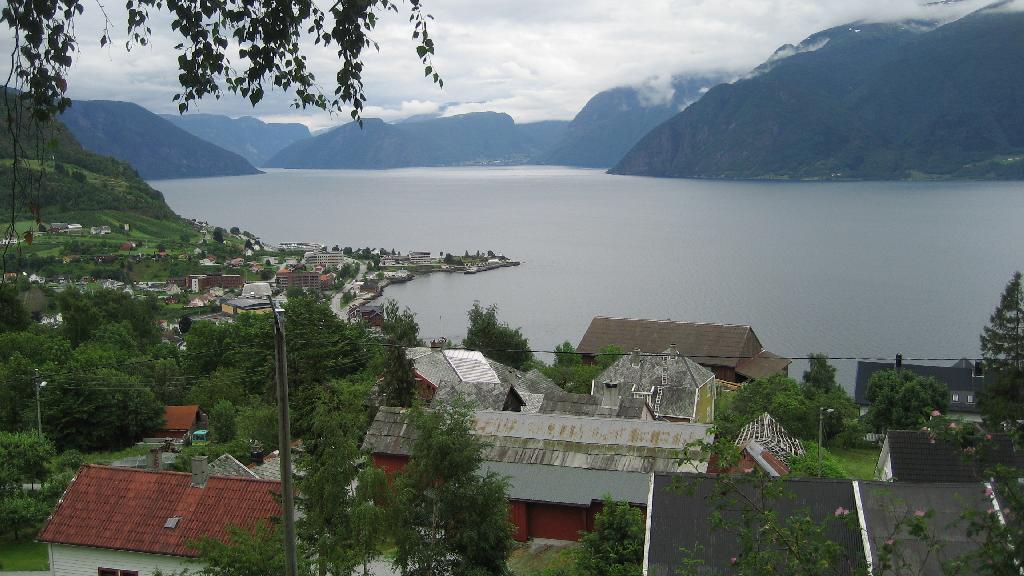
Wednesday 14 July to Bergen
We traveled to Flam and took the
world famous "Norway in a nutshell" railway. Along the way we traveled
across the fjord on a ferry and passed through many tunnels (including one
which is 24.5km long - the longest road tunnel in the world). The Flam
railway rises 828m in just 20km making it the steepest railway in the
world. On either side there was the stunning scenery we are coming to
expect of Norway and there was a stop to see some majestic
waterfalls.

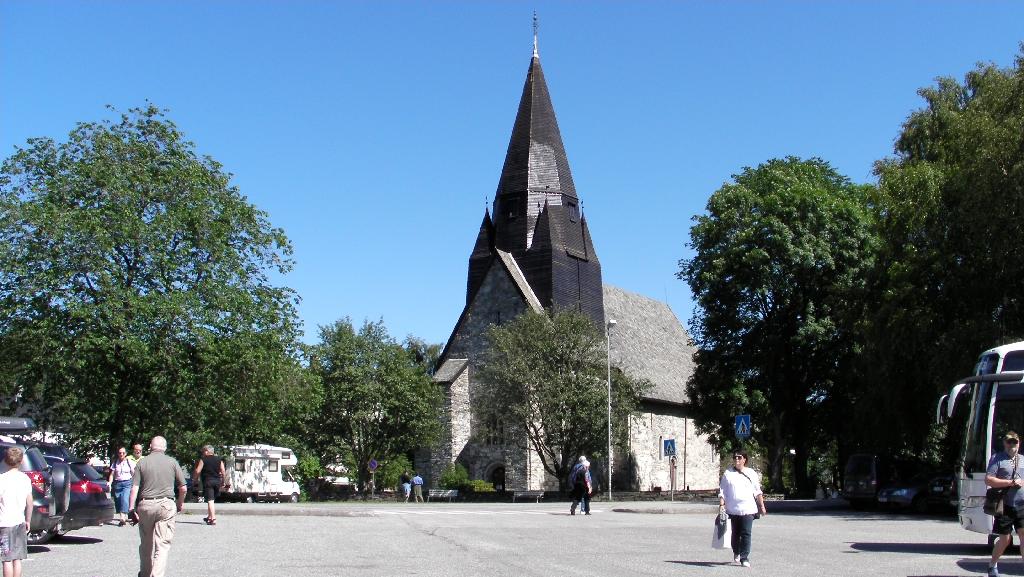
Afterwards we transferred to another train and went on to Voss.
There we saw the first stone church built in Norway, dating back to the
1200s. We then moved on to our overnight stop: Bergen, the second biggest
city in Norway (after Oslo). We had a wick look around the city before checking into our hotel in the city centre.
Bergen was buzzing with
people enjoying the summer sunshine (unusual as it rains here 300 days a
year). We walked around the city centre and saw the statue of Edvard Grieg,
the composer; the fish market; the old Hanseatic town and the World
Heritage Brugge (port) on the waterfront. Many of the old buildings date
back to the 1700s when they were rebuilt after a fire. Some of them are a
bit lopsided. We the took the Floibanen funicular cable car up to the top of
Mt Floyen and saw a magnificent panoramic of the city. There were lots more people up there, showing that there were some cruise ships in
town. We then had a wander around the city and appreciated seeing so many out enjoying the summer sun; many having little BBQs. Bergen is certainly a city with a lot of life - and a lot of tourists!
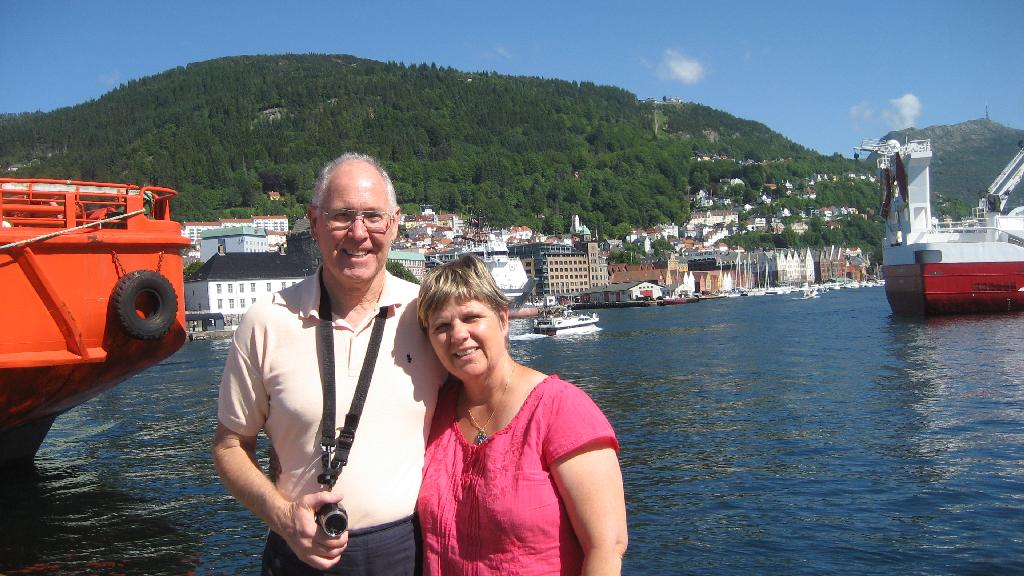
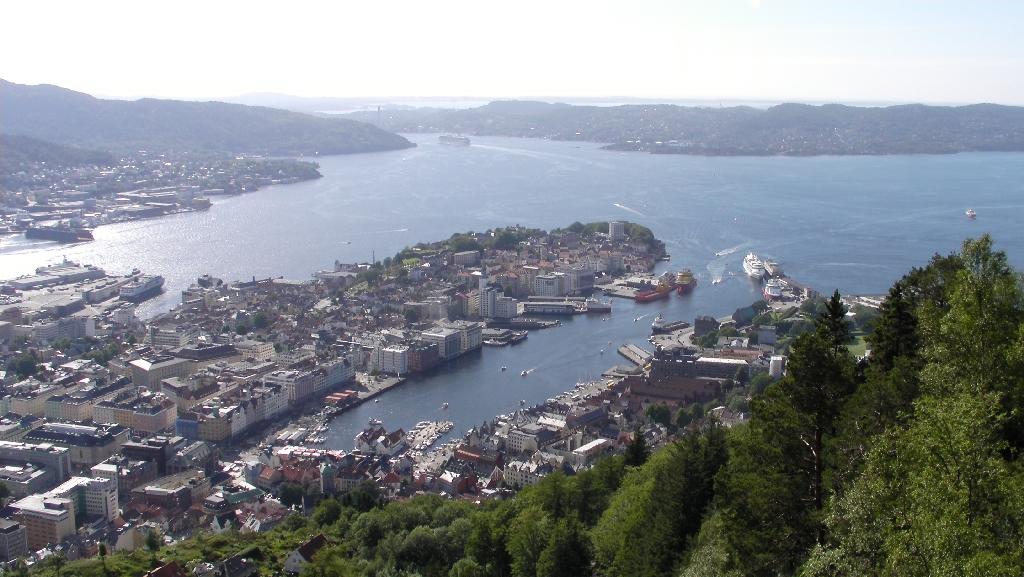
Thursday
15 July Bergen to Geilo
This was a very long day in the bus. We left Bergen
at 1pm and headed east. We soon reached the Hardangerfjord and traveled up
towards its mouth. Unfortunately part of the road was closed so we took a
ferry across the fjord and then had to drive for an hour up one of its tributaries, then back down the other side, to be just opposite where we started! We finally left the fjord and headed up a dramatic mountain
pass, then over a flat plateau that was pretty well bereft of anything but
grass, lakes and rocks. We finally arrived in Geilo about 8.30pm. Everybody
was pretty tired by this time but we had seen some typical fjord scenery
(with waterfalls, glaciers, towering hills
and pretty seaside villages) but
we had also seen scenery that was quite different -almost moon-like. Geilo
is a pretty ski resort but we were more interested in getting to bed than
we were in looking around the village!
Friday 16th July Oslo
We
drove from Geilo to the Norwegian capital, Oslo. Oslo was founded in 1048
by Harald, the Viking king. It was part of the Hanseatic league but in 1624
the city burnt down and was rebuild by King Christian. From that time Oslo
was called Christiania - right through to 1925. It was under German
occupation during WW2 but was not bombed. The city developed a lot in the
1980s and now has over half a million people. It is on the Oslofjorde so
you can see lots of cruise ships, pleasure craft and replicas of old boats.
Refelecting its nautical history there is a big Viking Ship museum and
another museum showing Thor Heyerdahl's Kon Tiki raft.
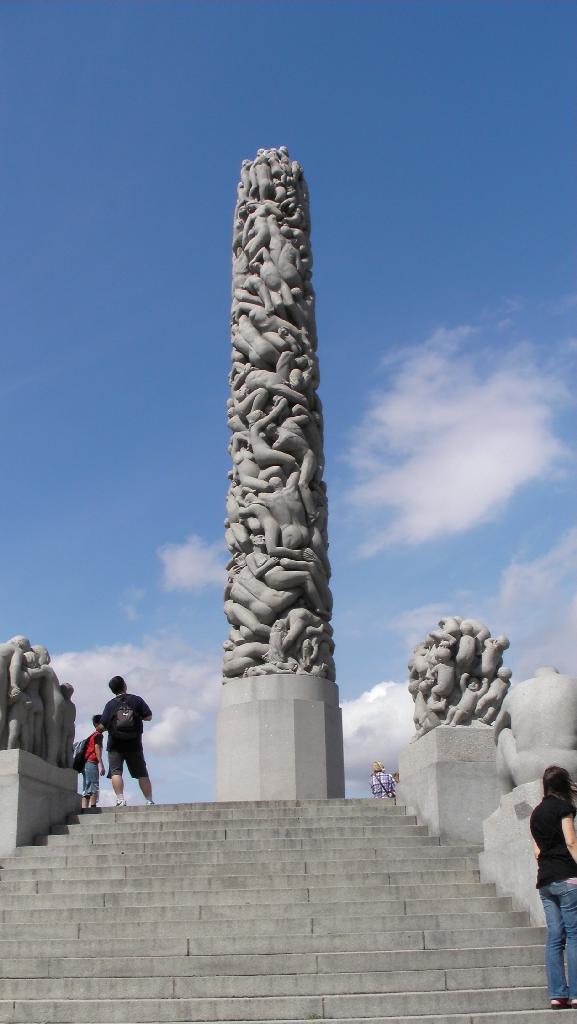
On our city tour
we saw City Hall where the Nobel Peace prizes are given out. It was
completed in 1950s and is notable for its big clock. We then saw the
Parliament buildings, and the Akershus Fortress and castle founded by King
Christian IV. Next we saw the new marble Opera house which is made to look
like an iceberg; the Cathedral and the Royal Palace where King Harald,
Queen Sonya and their family live. Next stop was the Vigeland Park, the
world's largest sculpture park. It contains 200 sculptures in bronze,
granite and wrought iron. The scultures all nude and portray various
aspects of human life and relationships.
In the afternoon we met up with friends Marit and Stein, who took us for a walking tour of the city. Oslo is a bustling modern city
with a vibrant harbour a Brugge (port) area. Our tour ended with a
farewell dinner at our hotel.

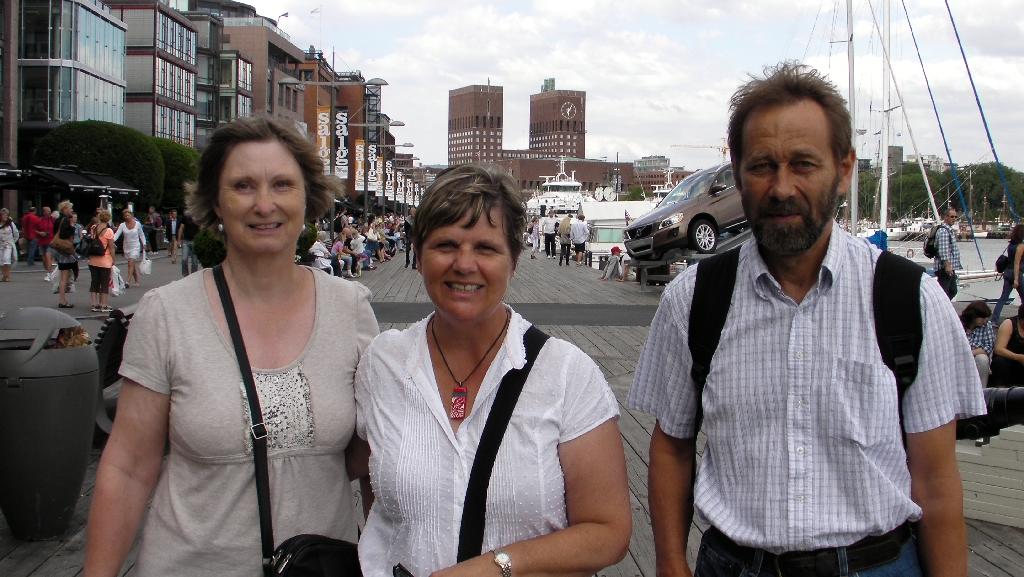
The Trafalgar "Scandinavia, Russia, and
Estonia" tour was excellent and we all really enjoyed the sightseeing, and
each others' company. Special highlights were:
- a congenial group of Australians, Canadians, Americans and New Zealanders
- an excellent tour director in Goran and a safe driver in Wolfgang
- interesting city visits in Copenhagen, Stockholm, Helsinki, St Petersburg, Tallinn, Bergen and Oslo. These city visits enabled us to
- experience the unique 'flavour' of each place and to understand its history and significance
- a variety of modes of transport: bus, walking, trains, boats, ferries and ships
- the awe inspiring scenery of Norway, particularly around the fjords
- learning about the history of this part of the world
- being enriched by interacting with people and cultures somewhat different from our own.
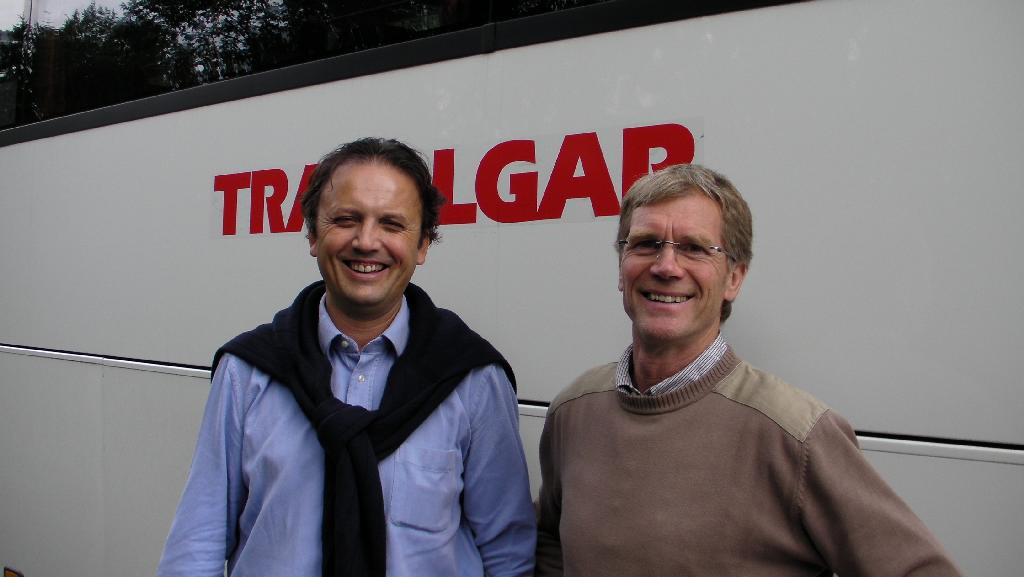
We would recommend this tour to anyone and feel privileged to have visited such an interesting part of the world.